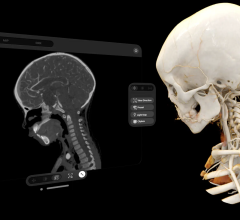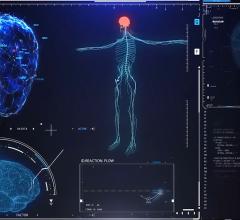
There are some key requirements specifically aimed at imaging and radiology included in the Stage 2 meaningful use (MU) requirements released Aug. 23 by the Department of Health and Human Services (HHS). HHS fielded many concerns and questions about these requirements and offered answers in the 642-page document.
The Stage 2 rule will guide software development and integration for picture archiving and communication systems (PACS), radiology information systems (RIS) and remote image viewing systems. The rule’s requirements will also guide reimbursement levels from the Centers for Medicare and Medicaid Services (CMS), with higher incentive reimbursements going to facilities that meet the requirements and lower reimbursements for those that do not.
The biggest requirement calls for images and radiology reports to be made accessible through a certified electronic health record (CEHRT) that meets Stage 2 requirements.
HHS said making images that result from diagnostic scans and accompanying information accessible through CEHRT increases the utility and efficiency of both the imaging technology and the EHR. The ability to share the results of imaging scans will likewise improve the efficiency of all healthcare providers and increase their ability to share information with their patients. HHS said this has the potential to reduce the cost and the radiation exposure from tests that are repeated solely because a prior test is not available to the provider.
Use of Remote Viewing Systems
In public comments on this rule, some healthcare professionals expressed concerns over the ability of some CEHRTs to store images. However, HHR responded that the CEHRT does not need to store the images, it only needs to make them accessible. This may include use of cloud-based image storage and retrieval remote viewing systems.
Commenters also stated concerns over the ability of health information exchange (HIE) organizations to facilitate image exchanges. They contend that building out a unique interface for each imaging provider would be cost-prohibitive. HHS said other concerns were that stand-alone radiology centers are not subject to the CMS EHR incentive program, so they may not agree to provide their images electronically to the provider through their EHR. For this reason, some commenters felt it is premature to include this objective.
HHS said it agrees that many advances in infrastructure are needed to fully enable this objective, but significant progress will be made in part due to the inclusion of this objective in Stage 2 MU. HHS agrees that these improvements in infrastructure will vary based on local conditions, such as the presence of HIEs, the willingness of radiology centers to link to EHRs and other factors. HHS said these concerns will be considered when setting thresholds to meet this goal.
Addressing Diagnostic Image Quality
The high resolution required for viewing images for diagnostic purposes requires specific hardware, which would be cost-prohibitive for all physicians to meet. HHS said this rule does not impose limitations on the resolution of the image. To the extent this is a concern, it would be a capability of CEHRT, not a requirement of meaningful use.
Radiology Requirements for CPOE and CDS
Stage 2 calls for more than 30 percent of radiology orders to use computerized physician order entry (CPOE). HHS said CPOE improves quality and safety by allowing clinical decision support at the point of the order and therefore influences the initial order decision. CPOE also improves safety and efficiency by automating aspects of the ordering process to reduce the possibility of communication and other errors.
The rule also calls for use of clinical decision support (CDS) software to improve performance on high-priority health conditions. HHS stated it would be left to the provider's clinical discretion to select the most appropriate CDS interventions for their patient population. HHS also said the CDS interventions selected must be related to five or more of the clinical quality measures (CQMs) on which providers would be expected to report.
CDS software might include checking to see if a patient’s condition or symptoms match current appropriate use criteria for particular imaging modalities or other diagnostic tests.
Emergency, Inpatient Imaging Exams Excluded
One radiology-specific proposal was removed from the Stage 2 requirements. It called for more than 40 percent of all scans and tests whose result is one or more images ordered for patients admitted to an inpatient or emergency department to be accessible through a CEHRT.
HHS defined accessible as either incorporation of the image and accompanying information into CEHRT or an indication in CEHRT that the image and accompanying information are available for a given patient in another technology, with a link to that image and accompanying information. Incorporation of the image means that the image and accompanying information is stored by the CEHRT. HHS said a link to the image and accompanying information means that a link to where the image and accompanying information is stored is available in CEHRT. HHS did not propose that meaningful use would impose any additional retention requirements on the image.
While most commenters on the rule agree with the principle of exchange of images among providers, nearly all agreed this measure would be premature for Stage 2 due to infrastructure concerns. For this reason, it was removed and will be considered when developing Stage 3 rules.
Public commenters had suggested that the proposed threshold of 40 percent was too high, given the dependency on the image provider and electronic exchange infrastructure discussed in the objective. The most popular suggested threshold was 10 percent. Commenters also had suggested that an exclusion be created for providers who have no access to electronic images. A few of the commenters pointed to the lack of an imaging provider that could make electronic images available. Others were concerned that when a provider uses multiple imaging providers, 40 percent might be too high of a threshold, even if at least one imaging provider that could make electronic images available.
After reviewing the comments, HHS agreed that 40 percent was too high of a threshold for this measure and revised it to 10 percent. Providers may use many imaging providers, and HHS did not want physicians to have to defer this objective simply because they have three imaging providers and the one allowing electronic access represents less than 40 percent of their orders. The comment regarding complete lack of an imaging provider that could make electronic images available speaks to the need for an exclusion, said the HHS.
In considering an exclusion for those providers who have no access to electronic images, HHS took into account that there may be providers who fall into a situation where they have limited access to images, but less than 10 percent. HHS finalized an exclusion for providers who have no access to electronic images. However, for those who cannot meet the 10 percent threshold, even with access to an imaging provider who makes electronic images available, there was concern that providers would just defer this optional requirement or shift more orders to imaging providers that do allow electronic access.
“Our intention with the proposed exclusion was to distinguish between ordering providers who have need of the image and those that do not. Based on the comments, the need to view the image depends on a combination of factors, including previous experiences with the type of image, the imaging facility, the circumstances of the patient, whether a similar image has been ordered before for the patient and the reading clinician. Given the wide variety of factors, we agree that it is not possible to create a distinct line between ordering providers who need the image and those that do not,” HHS wrote.
For Stage 2, HHS said it did not propose the use of structured data for the image or accompanying information (for example, radiation dose).
Key Stage 2 Requirements
The Stage 2 requirements that will likely have the biggest impact on clinical practice include:
•
Use of computerized provider order entry (CPOE) for medication, laboratory and radiology orders
•
Imaging results consisting of the image and any report information needs to be accessible through a certified EHR technology (CEHRT)
•
Use of clinical decision support (CDS) to improve performance on high-priority health conditions
•
Automatic tracking of medications from order to administration using assistive technologies in conjunction with an electronic medication administration record (eMAR)
•
Hospitals need to provide clinical lab results as structured data
Additional Stage 2 Requirements
Some of the key technology requirements outlined in Stage 2 meaningful use include:
• The ability for patients to view online, download and transmit their health information
• Use of secure electronic messaging to communicate with patients on relevant health information
• Clinical summaries must be provided to patients within one business day for more than 50 percent of office visits
• Providers should be able to generate lists of patients by specific conditions to use for quality improvement, reduction of disparities, research or outreach
• Providers also should use clinically relevant information to identify patients who should receive reminders for preventive/follow-up care and send these patients the reminders, according to the patient’s preference
• Hospitals are now required to record and chart changes in the following vital signs: height, weight, blood pressure, body mass index (BMI), smoking status for patients 13 years and older
• Family health history needs to be recorded in a structured data format
• Use of clinically relevant information from the EHR to identify the need for patient-specific education resources and provide those resources to the patient
• When a patient transitions to another care setting or provider, the doctor or facility needs to provide a summary care record for each transition of care or referral
• Capability to submit electronic data to immunization registries or immunization information systems
• Capability to submit electronic reportable laboratory results to public health agencies
• Capability to submit electronic syndromic surveillance data to public health agencies
• Capability to identify and report cancer cases to a state cancer registry
• Capability to identify and report specific cases to a specialized registry
In addition, the following information is now required to be part of the electronic clinical summary for Stage 2 meaningful use:
• Patient name
• Provider’s name and office contact information
• Date and location of the visit
• Reason for the office visit
• Current problem list
• Current medication list
• Current medication allergy list
• Procedures performed during the visit
• Immunizations or medications administered during the visit
• Vital signs taken during the visit (or other recent vital signs)
• Laboratory test results
• List of diagnostic tests pending
• Clinical instructions
• Future appointments
• Referrals to other providers
• Future scheduled tests
• Demographic information maintained within CEHRT (sex, race, ethnicity, date of birth, preferred language)
• Smoking status
• Care plan field(s), including goals and instructions
• Recommended patient decision aids (if applicable to the visit)
To see the full Stage 2 meaningful use rule, go to www.ofr.gov/OFRUpload/OFRData/2012-21050_PI.pdf.
For an overview of the Stage 2 rule, go to www.itnonline.com/article/government-releases-stage-2-meaningful-use-final-rule.


 May 01, 2024
May 01, 2024 








